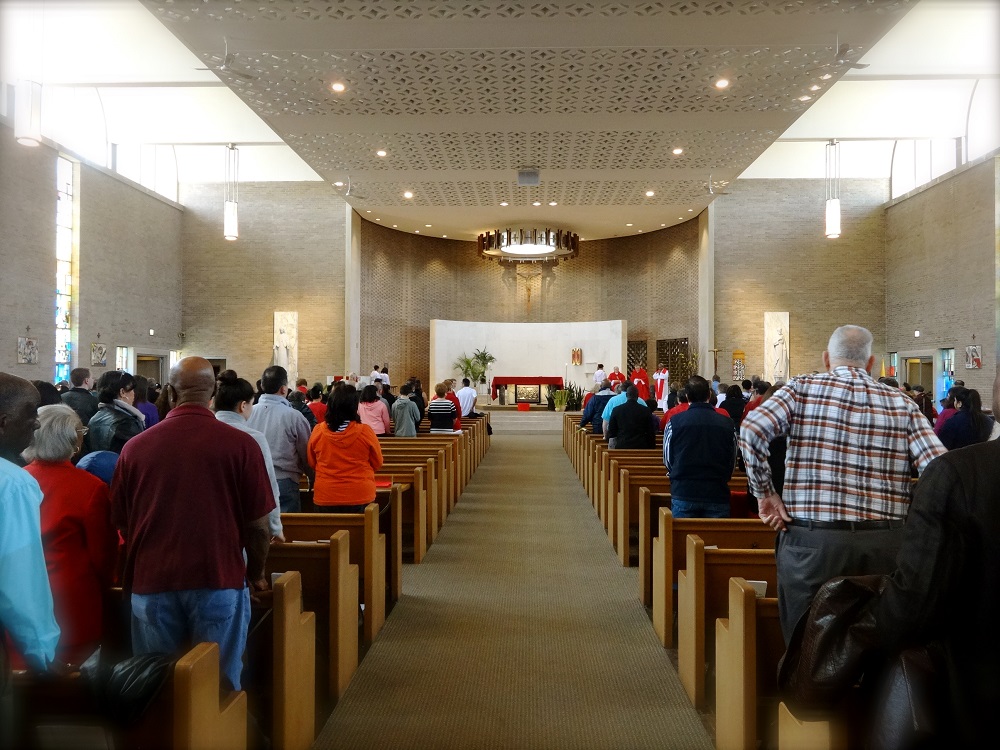True Congregational Unity through Musical Diversity
The most recent issue of Liturgy dealing with “Communities of Musical Practice,” guest-edited by E. Byron Anderson, offers the many ways congregations use music, learn new music, teach familiar hymns to new members, and generally tread the fine lines that allow music to work its faith nourishment in the congregation by both comforting and challenging. What follows is an excerpt from Steven Janco’s essay describing the journey of a long-established congregation to navigate three challenges they faced in broadening their musical repertoire: 1) to work with the given order of service and texts, 2) to honor the role of music as a ministry, and 3) to monitor the theology of the hymn texts. –– Melinda Quivik
~~~~~~~~~~~~~
Over time, every parish community develops a repertoire of congregational music with particular characteristics, whether formally identified or not. Certain styles may be privileged over others. Certain instruments may be used more often. Hymn and song texts may reflect a particular theological or ecclesiological orientation. In some large parishes, a number of musical styles may be used every Sunday, with certain liturgies drawing worshipers who prefer one particular musical style over others. In this case, the regular participants in a particular liturgy may become a separate or subcommunity of musical practice within the larger parish.
One might assume, then, that commonality of musical practice is the way to promote unity and solidarity among worshipers. In a multicultural community, the opposite often is true. Relying on one preferred set of musical practices or offering “separate-but-equal” liturgies creates insiders and outsiders––“us” and “them”––and promotes a spirituality of avoidance and insularity. A diverse community of musical practice that utilizes the gifts of multiple cultures within one liturgical celebration expresses unity-in- diversity and fosters a spirituality of encounter and solidarity.
For more than forty years, the parish [I have served in Chicago for fourteen years as director of liturgy and music] has been home to a larger percentage of African American and white parishioners and a smaller percentage of parishioners from a variety of ethnic groups, including people of Filipino, Hispanic, Haitian, and African descent. Even in the midst of such diversity, the parish has remained one community, with people of multiple cultures worshiping together on Sundays. In recent years, Hispanic families have begun moving into the area, presenting a new challenge and opportunity. After describing the parish’s historical and current musical practice, I will discuss how recent demographic changes are impacting the community’s musical practice.
St. Eulalia is located in a suburb that began to transition from a white to a predominantly African American population in the late 1960s and 1970s. This transition coincided with the implementation of Vatican II liturgical reforms and the introduction of the Mass and other sacraments in the vernacular. That the congregation would be expected to sing during the celebration of Eucharist was new to African American as well as white Catholics. In the 1970s and 1980s, mainstream Catholic contemporary music became the mainstay of the parish’s repertory. . .
Questions about musical practice at St. Eulalia during this transition focused on cultural and stylistic issues, not unlike other parishes dealing with folk versus traditional music. Can African American Protestant music be used in Catholic worship? Are piano and drums too secular? Should the choir be singing gospel music that’s been made popular on the radio? As time went on, the choir became more ethnically diverse and began to diversify its repertory. But congregational music was slower to catch up, as most mainstream Catholic hymnals and periodical missals included only a few well-known spirituals. And, music leaders at the parish and in the parish school had little experience with the music of the wider African American Christian community.
There is a great deal of variety within the gospel genre. At St. Eulalia, the preferred gospel style leans more toward a soulful feel rather than a faster beat often associated with Pentecostal worship. Early efforts to incorporate African American musical styles into the liturgy focused on spirituals and songs with repetitive texts and gospel music for choir (and soloist). Oral tradition songs with very little text were easy to teach and sing, even if their renditions at times felt a little awkward. The congregation didn’t need a hymnal in order to sing “Come and Go with Me to My Father’s House,” “I’m So Glad Jesus Lifted Me,” “This Little Light of Mine,” or “He’s Got the Whole World in His Hands.” Repetitive text also opened up the possibility of clap- ping while singing! The choir played an important role in introducing con- temporary gospel music to the parish, as much music written in the last fifty years is written for choir or for choir and soloist. Given the priority of congregational singing in the post-Vatican II Roman Rite, gospel music of this genre was often performed during the offering and preparation of the altar—or as a meditation after communion. I served at St. Eulalia from 1986 to 1990, during which time the inclusion of even just one full-blown gospel piece performed with an experienced soloist, a proficient piano player, and percussion, could have a significant impact as a sign of recognition, validation, and an embracing of cultural gifts.
Steven Janco’s full essay in Liturgy 33, no. 4 is available by personal subscription and through many libraries.



